Navigating the World of AI-Powered Presentation Templates
A Comprehensive Guide to Finding and Using Smart Templates
I've spent countless hours exploring the landscape of AI-powered presentation tools, and I'm excited to share what I've discovered. In this guide, I'll walk you through everything you need to know about finding and leveraging AI presentation templates to create stunning visual content with minimal effort.
Understanding AI Presentation Templates and Their Benefits
When I first discovered AI-powered presentation templates, I was amazed at how different they were from traditional templates I'd been using for years. Unlike static templates that provide only design elements, AI templates actively assist in content creation, organization, and visualization.

Key Advantages of AI-Powered Templates
Time Efficiency
I've saved countless hours using AI templates that automatically generate content and suggest layouts based on my input.
Professional Design
Even without graphic design skills, I can create visually stunning presentations that look professionally designed.
Dynamic Visualization
Complex data becomes clear and compelling through AI-powered charts and graphs that adapt to my information.
Smart Personalization
Templates that learn from my content and adjust to my specific needs create more relevant presentations.
How AI Templates Save Time
Based on my experience, here's how AI templates compare to traditional methods in terms of time spent:
In my work across different industries, I've seen how AI templates are revolutionizing presentation creation. Marketing teams can quickly generate data-rich pitch decks, educators can create engaging lesson slides with minimal effort, and researchers can transform complex findings into digestible visual stories.
The most impressive aspect I've found is how AI presentation makers adapt to different content types, intelligently suggesting layouts and visuals that match the subject matter and purpose of your presentation.
Finding the Perfect AI Presentation Template Platform
With so many options available, I've spent considerable time evaluating different AI presentation platforms. Each offers unique strengths depending on your specific needs and workflow preferences.
AI Presentation Platform Ecosystem
Here's how I visualize the current landscape of AI presentation tools:
flowchart TD
User[User Needs] --> Platform{Platform Selection}
Platform --> PageOn[PageOn.ai]
Platform --> Piktochart[Piktochart]
Platform --> SlidesNest[SlidesNest]
Platform --> Canva[Canva]
PageOn --> Conversational[Conversational AI]
PageOn --> VisualStructure[Visual Structure]
PageOn --> AIBlocks[AI Blocks]
Piktochart --> Templates[Template Library]
Piktochart --> UseCase[Use Case Organization]
Piktochart --> DataViz[Data Visualization]
SlidesNest --> PowerPoint[PowerPoint Integration]
SlidesNest --> GoogleSlides[Google Slides Integration]
SlidesNest --> Keynote[Keynote Integration]
Canva --> MagicWrite[Magic Write]
Canva --> AssetLibrary[Asset Library]
Canva --> DesignTools[Design Tools]
style PageOn fill:#FF8000,color:white
style Piktochart fill:#42A5F5,color:white
style SlidesNest fill:#66BB6A,color:white
style Canva fill:#EC407A,color:white
Comprehensive AI Presentation Solutions
PageOn.ai
In my experience, PageOn.ai stands out with its unique conversational approach. Instead of starting with templates, I can simply describe what I want to communicate, and it generates structured visual content that matches my intent. This is particularly useful when I'm starting with fuzzy concepts that need clarity.
Piktochart
What I appreciate about Piktochart is its well-organized template library that's categorized by use case and industry. When I'm creating business infographics or health posters, I can quickly find relevant AI-powered templates designed specifically for those purposes.
SlidesNest
SlidesNest has been my go-to when I need to work within existing presentation software. Their AI templates integrate seamlessly with PowerPoint, Google Slides, and Keynote, making it easy to leverage AI capabilities while working in familiar environments.
Canva
I've found Canva's combination of AI writing tools with extensive visual asset libraries particularly powerful. Their Magic Write feature helps me generate content while giving me immediate access to design elements that enhance my presentations.
Compatibility Considerations
When choosing a platform, I always consider compatibility with my existing workflow. Here's a comparison based on my testing:
| Platform | PowerPoint | Google Slides | Keynote | Export Options |
|---|---|---|---|---|
| PageOn.ai | Export Compatible | Export Compatible | Export Compatible | PDF, PNG, Interactive |
| Piktochart | Direct Integration | Direct Integration | Export Only | PDF, PNG, PPT |
| SlidesNest | Native Templates | Native Templates | Native Templates | Native Formats |
| Canva | Export Compatible | Direct Integration | Export Compatible | PDF, PNG, PPT, Video |
Pricing Models
In my research, I've found that pricing varies significantly across platforms, with most offering both free and premium options:
When evaluating pricing, I consider not just the cost but the value offered. Some platforms like PageOn.ai may have fewer templates but offer more powerful AI customization capabilities, while others like Canva provide vast template libraries with more basic AI features. In my experience, the best choice depends on whether you value flexibility and AI power or template variety and design options.
Selecting Templates Based on Your Specific Needs
I've learned that choosing the right AI template depends heavily on your role and presentation purpose. Here's my breakdown of how to select templates based on specific professional needs.
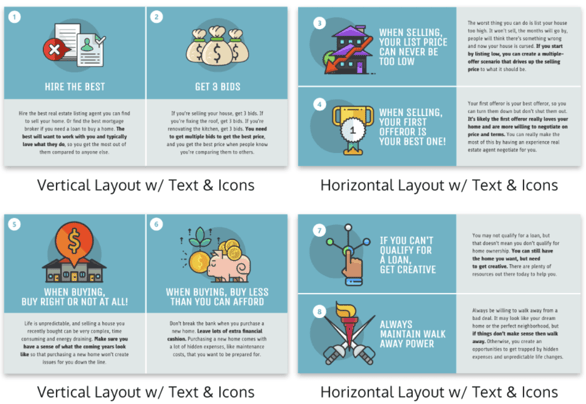
For Business Professionals
Pitch Deck Templates
When I'm preparing investor presentations, I look for templates with clear problem-solution frameworks, market analysis sections, and financial projection slides. The best AI pitch templates I've found automatically suggest compelling narrative structures based on my business model.
Business Proposal Templates
For client proposals, I prefer templates that incorporate persuasive structures with clear ROI sections. AI business presentation generators can automatically format executive summaries and implementation timelines based on my input.
Sales Presentation Templates
For sales presentations, I've had success with templates that incorporate dynamic data visualization capabilities. These allow me to input my sales figures and automatically generate compelling charts that highlight growth trends and market opportunities.
For Educators and Students
Lesson Slide Templates
When creating educational content, I look for templates with built-in educational frameworks like the 5E model (Engage, Explore, Explain, Elaborate, Evaluate). AI lesson presentation makers can automatically suggest engagement activities and assessment questions based on the lesson content.
Research Presentation Templates
For academic presentations, I've found templates with proper citation sections and methodology frameworks particularly useful. The best AI templates in this category automatically format content according to academic standards like APA or MLA.
Project Report Templates
Student project templates with logical information flow help organize findings and conclusions effectively. Free AI tools for educational slides often include templates specifically designed for different types of academic projects.
For Tech Presenters
AI and Technology Concept Templates
When presenting technology concepts, I look for templates with built-in visualization tools for algorithms and systems. The best templates in this category include animated flowcharts and process diagrams that can be easily customized.
Technical Process Visualization Templates
For explaining complex technological processes, I prefer templates with step-by-step visualization capabilities. These allow me to break down complicated workflows into digestible segments with appropriate technical iconography.
Innovation Showcase Templates
When highlighting cutting-edge ideas, I look for templates with modern, futuristic design elements. The best AI templates in this category automatically suggest visual metaphors that represent innovation and forward-thinking concepts.
Template Feature Comparison by User Type
Based on my analysis, here's how different template types prioritize key features:
In my experience, the most effective approach is to first identify your specific audience and presentation goals, then select a template category that aligns with those needs. From there, look for AI features that will enhance your particular content type rather than choosing based on visual appeal alone.
Maximizing AI Features in Presentation Templates
I've discovered that getting the most from AI presentation templates isn't just about finding them—it's about knowing how to leverage their AI capabilities effectively. Here are the strategies I use to maximize their potential.
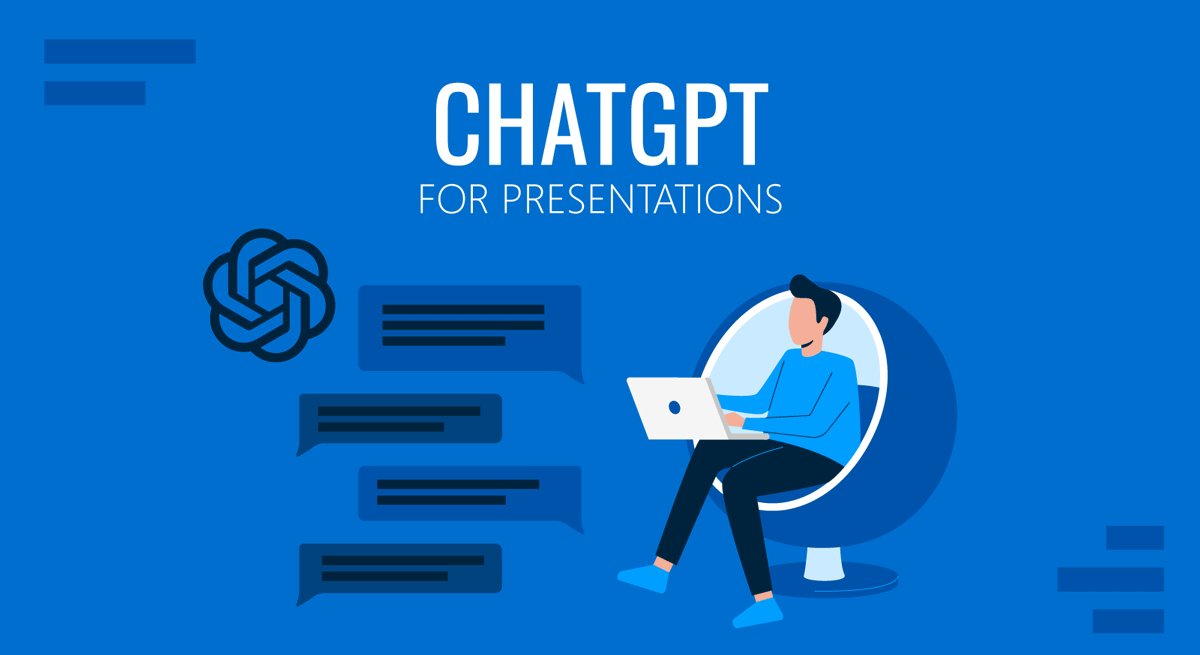
Leveraging AI Content Generation
One of the most powerful features I've found in modern AI templates is intelligent content generation. With PageOn.ai's conversation-based approach, I can articulate complex ideas in natural language and watch as the AI transforms them into structured visual content.
My Process for AI-Assisted Content Creation:
- Start with a clear objective statement (e.g., "I need to explain our new product features to potential investors")
- Provide key points in conversational format rather than trying to structure everything perfectly
- Review the AI's initial structure suggestion and refine as needed
- Add specific data points or examples to enhance the generated content
- Use the AI's suggestions for transitions between sections to create a cohesive flow
When working with PageOn.ai, I've found its ability to transform fuzzy concepts into clear visual structures particularly valuable. Rather than starting with a blank slide, I can describe a complex relationship or process, and the AI suggests appropriate visualization methods—whether that's a flowchart, comparison table, or hierarchical diagram.
From Concept to Visual Structure
Here's how I use PageOn.ai to transform ideas into visual structures:
flowchart LR
Idea[Fuzzy Concept] --> Conversation[Conversation with AI]
Conversation --> Analysis[AI Analysis]
Analysis --> Structure[Suggested Structure]
Structure --> Visual[Visual Expression Options]
Visual --> Template[Template Selection]
Template --> Customization[Personalization]
Customization --> Final[Final Presentation]
style Idea fill:#FF8000,color:white
style Final fill:#FF8000,color:white
Integrating Dynamic Data Elements
Another area where I've found AI templates exceptionally useful is in data visualization. Modern AI-powered platforms can transform raw data into compelling visual stories.
Charts and Graphs
I've used AI templates to automatically suggest the most appropriate chart types for my data. For example, when comparing performance across categories, the AI might suggest a bar chart, while for showing trends over time, it recommends a line graph.
Automatic Data Visualization
Many platforms allow me to upload spreadsheets or datasets and automatically generate visualizations. The AI analyzes the data structure and creates appropriate visual representations without requiring manual chart creation.
One feature I've found particularly valuable is PageOn.ai's Deep Search capability. When creating presentations about specialized topics, this tool helps me find relevant supporting visuals that enhance my narrative without spending hours searching for the perfect image or diagram.
Customization Capabilities
Customization Options by Platform
Based on my testing, here's how different platforms compare in terms of customization flexibility:
In my experience, the best AI templates strike a balance between automation and customization. They provide intelligent starting points but allow me to modify elements to match my brand identity or presentation style. PageOn.ai excels in component customization, allowing me to adjust individual elements while maintaining the overall AI-optimized structure.
Step-by-Step Guide to Creating with AI Presentation Templates
Based on my experience creating numerous presentations with AI templates, I've developed a systematic approach that yields the best results. Here's my step-by-step process.
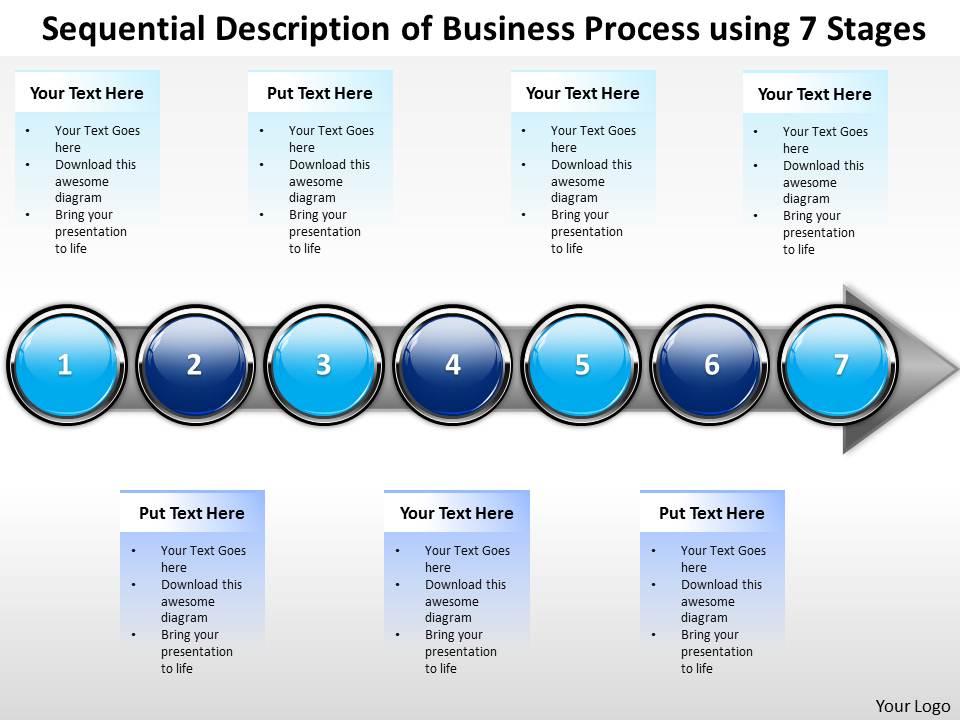
Initial Setup Process
Choose Your Platform
First, I select the AI platform that best matches my needs. For presentations requiring deep customization and conversational input, I typically use PageOn.ai. For quick, template-based designs, I might choose Canva or Piktochart.
Define Your Presentation Goal
I always start by clearly defining my presentation objective. Is it to inform, persuade, teach, or inspire? This helps the AI suggest appropriate templates and structures.
Select a Base Template or Start Fresh
Depending on the platform, I either select from AI-recommended templates based on my goal or start with a blank canvas and let the AI guide the structure based on my content input.
Content Input Methods
Different AI presentation platforms offer various ways to input content. I've experimented with all of these approaches:
Text-to-Slide Conversion
With platforms like PageOn.ai, I can paste an entire document or outline, and the AI will intelligently break it into slides, suggesting appropriate visuals and layouts for each section.
Voice Command Options
Some advanced platforms now offer voice input capabilities, allowing me to dictate my presentation content. The AI then structures this spoken input into organized slides.
AI Blocks Approach
One method I particularly like with PageOn.ai is using their AI Blocks feature. This allows me to build presentations like LEGOs, combining different content modules that the AI then optimizes and connects coherently.
AI Blocks Building Process
Here's how I use the AI Blocks approach to build presentations:
flowchart TD
Start[Start] --> CoreBlocks{Select Core Blocks}
CoreBlocks --> Intro[Introduction Block]
CoreBlocks --> Problem[Problem Statement Block]
CoreBlocks --> Solution[Solution Block]
CoreBlocks --> Data[Data Visualization Block]
CoreBlocks --> Conclusion[Call to Action Block]
Intro --> Arrange[Arrange Block Sequence]
Problem --> Arrange
Solution --> Arrange
Data --> Arrange
Conclusion --> Arrange
Arrange --> AIRefine[AI Refines Transitions]
AIRefine --> Customize[Customize Individual Blocks]
Customize --> Final[Final Presentation]
style CoreBlocks fill:#FF8000,color:white
style AIRefine fill:#FF8000,color:white
Editing and Refining AI-Generated Content
After the initial AI generation, I always take time to refine the content:
Review AI Suggestions
I carefully review all AI-generated text and visuals, checking for accuracy and alignment with my message.
Personalize the Content
I add my personal voice and perspective to ensure the presentation doesn't feel generic or AI-generated.
Enhance Visual Elements
I often refine the AI-suggested visuals, adjusting colors, sizes, and positions to enhance the overall aesthetic.
Adding Multimedia Elements
Modern AI presentation tools excel at suggesting and integrating multimedia:
Images
AI tools can suggest relevant images based on slide content and automatically apply appropriate styling.
Videos
Some platforms can recommend video clips or create animations that illustrate concepts mentioned in your slides.
Interactive Elements
Advanced AI templates can create clickable elements, quizzes, or interactive charts that engage your audience.
Final Touches
Before finalizing my presentation, I always perform these quality control checks:
- Check for consistency in fonts, colors, and spacing across all slides
- Ensure all text is readable (size, contrast) on different devices
- Verify that transitions between slides flow logically
- Test interactive elements to ensure they work as expected
- Review for any AI-generated content that might need human refinement
Advanced Tips for AI Presentation Template Mastery
After working extensively with AI presentation tools, I've developed some advanced techniques that help me get the most out of these powerful platforms.
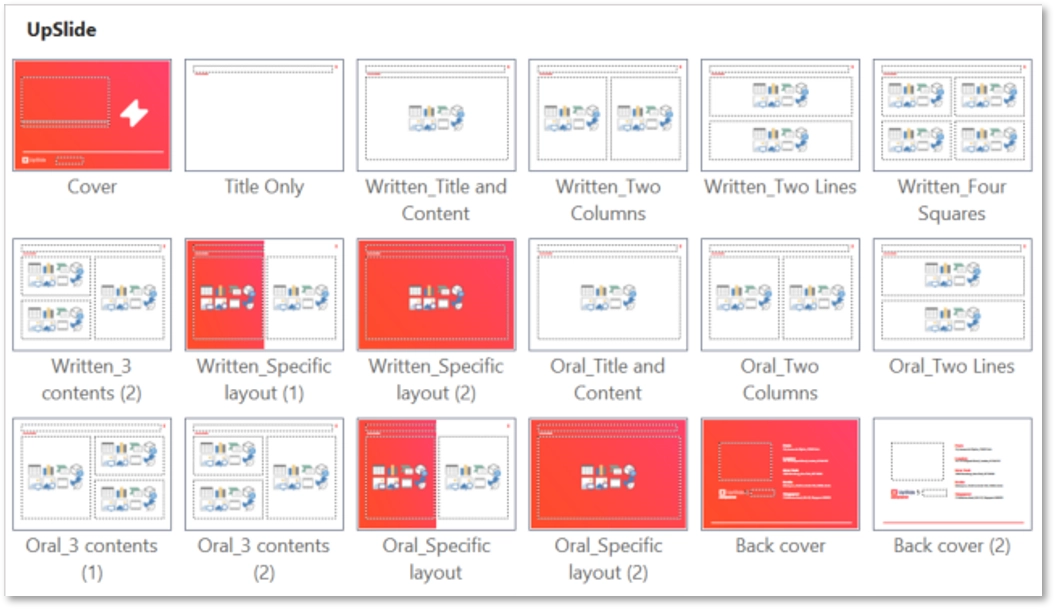
Combining Templates for Unique Presentations
One technique I've found particularly effective is combining elements from multiple AI templates to create something truly unique:
My Template Mixing Process:
- Identify the strongest elements from different templates (e.g., the data visualization from one, the narrative structure from another)
- Create a "master template" that incorporates these best elements
- Use AI tools to ensure visual consistency across the combined elements
- Save this custom template for future use to maintain a unique presentation style
Creating Custom AI Template Libraries
For consistent branding across all my presentations, I've developed a system for creating and maintaining custom AI template libraries:
Brand Element Library
I maintain a collection of brand-approved colors, logos, fonts, and image styles that can be quickly applied to any AI-generated template.
Slide Pattern Library
I've created a library of custom slide patterns for recurring presentation needs (e.g., data comparison slides, team introduction slides, milestone timelines).
Using PageOn.ai's agentic features has been a game-changer for my presentation workflow. Instead of manually designing each slide, I can describe my presentation intent in natural language, and the AI transforms it into a polished visual reality.
Agentic Presentation Creation Process
Here's how I use PageOn.ai's agentic features to streamline creation:
flowchart LR
Intent[Presentation Intent] --> Agent[AI Agent]
Agent --> Research[Research Phase]
Agent --> Structure[Structure Creation]
Agent --> Content[Content Generation]
Agent --> Design[Design Application]
Research --> Integration[Integration]
Structure --> Integration
Content --> Integration
Design --> Integration
Integration --> Review[Human Review]
Review --> Refinement[AI-Assisted Refinement]
Refinement --> Final[Final Presentation]
style Agent fill:#FF8000,color:white
style Integration fill:#FF8000,color:white
Cross-Platform Techniques
I often need to work across different presentation platforms. Here are my strategies for adapting AI templates between systems:
| Source Platform | Target Platform | Adaptation Technique |
|---|---|---|
| PageOn.ai | PowerPoint | Export as PPTX with editable elements preserved; adjust fonts if needed |
| Canva | Google Slides | Use direct integration or export as PDF and import; recreate complex elements |
| SlidesNest | Keynote | Use native Keynote templates; transfer content manually for best results |
| Piktochart | PageOn.ai | Export visual elements; use PageOn.ai's import feature to enhance with AI capabilities |
Troubleshooting Common Issues
AI Content Relevance Issues
If the AI generates content that's not quite on target, I've found that providing more specific context and examples helps calibrate its understanding of my needs.
Design Consistency Problems
When mixing AI-generated elements causes visual inconsistencies, I use the "design system" feature in platforms like PageOn.ai to enforce uniform styling across all components.
Data Visualization Errors
For AI-generated charts that misrepresent data, I've learned to provide clearer data labels and explicitly state the relationship I want to highlight.
These advanced techniques have helped me create presentations that stand out from the typical template-based designs while still leveraging the power and efficiency of AI assistance. By combining templates, creating custom libraries, and mastering cross-platform techniques, I can maintain a unique presentation style while saving significant time in the creation process.
Future Trends in AI Presentation Templates
Based on my observations of the rapidly evolving AI presentation landscape, I see several exciting trends on the horizon that will transform how we create and deliver presentations.
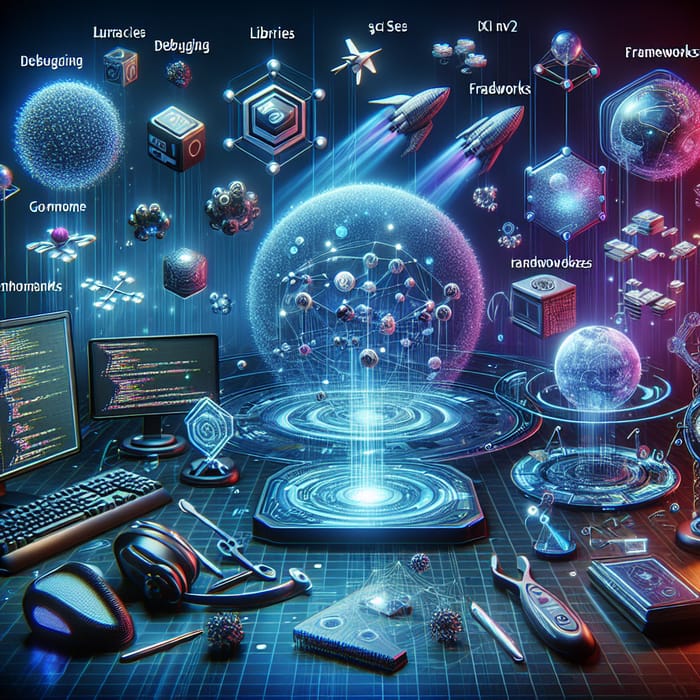
Emerging Technologies Enhancing Templates
Multimodal AI Integration
I'm seeing early signs of presentation templates that can process and respond to multiple types of input—text, images, voice, and even gestures. This will allow for more intuitive creation processes where I can sketch a rough diagram and have the AI perfect it, or describe a concept verbally and watch as it's visualized in real-time.
Advanced Data Integration
Future templates will likely connect directly to data sources like CRMs, analytics platforms, and research databases, automatically creating and updating visualizations as the underlying data changes. This will make presentations more dynamic and always current.
Audience Adaptation Capabilities
I'm particularly excited about emerging technologies that allow presentations to adapt in real-time based on audience engagement. Templates might include multiple versions of content that automatically display based on audience reactions or questions.
Interactive and Responsive Features
The future of AI presentation templates will likely be highly interactive:
Predicted Growth of Interactive Features
Based on current development trends, here's how I expect interactive features to evolve:
Continuous Improvement Through AI
I'm particularly fascinated by how AI is continuously improving template quality and relevance:
Learning From User Behavior
AI systems are increasingly able to learn from how users modify templates, identifying patterns that inform future template designs and recommendations.
Industry-Specific Optimization
Templates are becoming more specialized for particular industries and use cases, incorporating domain knowledge and best practices specific to fields like healthcare, education, or finance.
Presentation Performance Analytics
Future AI systems will likely analyze how audiences engage with presentations and provide insights on which elements were most effective, helping to refine templates over time.
Predictions for the Evolution of Presentation Creation
The Evolution of Presentation Creation
Here's how I see presentation creation evolving over time:
flowchart LR
Past[Past: Manual Design] --> Present[Present: AI Templates]
Present --> Near[Near Future: Intelligent Assistants]
Near --> Future[Future: Autonomous Creation]
Past --> |"Design Software
Static Templates"|Present
Present --> |"Natural Language Input
Dynamic Templates"|Near
Near --> |"Intent-Based Creation
Audience Adaptation"|Future
style Past fill:#d3d3d3
style Present fill:#FF8000,color:white
style Near fill:#42A5F5,color:white
style Future fill:#66BB6A,color:white
Based on current trends, I predict that within the next few years, we'll see AI presentation tools that can:
- Generate entire presentations from a simple conversation about objectives and audience
- Automatically adapt content and design based on real-time audience feedback during delivery
- Incorporate personalized elements for each audience member when viewed digitally
- Suggest improvements based on analysis of thousands of successful presentations in similar contexts
- Create seamless transitions between different presentation formats (slides, interactive demos, videos)
As these technologies evolve, I believe the role of presentation creators will shift from designers to directors—focusing more on strategy, messaging, and audience engagement while the AI handles the technical aspects of creation and optimization. This will democratize access to professional-quality presentations and allow everyone to communicate their ideas more effectively.
Transform Your Visual Expressions with PageOn.ai
Ready to revolutionize how you create presentations? PageOn.ai's conversation-based approach makes it easy to turn your ideas into stunning visual content without the hassle of traditional templates.
Start Creating with PageOn.ai TodayConclusion: Finding Your Perfect AI Presentation Solution
Throughout this guide, I've shared my experiences navigating the world of AI-powered presentation templates. As we've seen, these tools offer tremendous advantages in terms of time savings, professional design quality, and dynamic content creation.
When searching for the right AI presentation template solution for your needs, consider your specific use case, technical requirements, and design preferences. Whether you're a business professional creating pitch decks, an educator developing lesson materials, or a tech presenter explaining complex concepts, there's an AI template platform that can enhance your presentation creation process.
I've found that AI tools for presentation and slideshow creation like PageOn.ai offer unique advantages through their conversational approach and ability to transform fuzzy concepts into clear visual structures. The ability to build presentations using AI Blocks and leverage Deep Search for finding the perfect supporting visuals has revolutionized my workflow.
As AI presentation technology continues to evolve, we can look forward to even more intuitive, interactive, and personalized template options. By staying informed about these developments and experimenting with different platforms, you'll be well-positioned to create engaging, professional presentations that effectively communicate your ideas and inspire your audience.
You Might Also Like
Creating Interactive and Animated Infographics for Enhanced User Engagement
Discover how to transform data into captivating interactive stories through animated infographics. Learn best practices, technical approaches, and tools for creating engaging visual experiences.
From Complexity to Clarity: Why Creators Are Trading Notion for Apple Notes
Discover why creators are simplifying their productivity systems by moving from Notion to Apple Notes, and how this digital minimalism enhances creative output and mental clarity.
PDR Security Framework: Visualizing Protection, Detection & Response Systems
Explore the PDR Security Framework with visual guides to Protection, Detection, and Response systems. Learn implementation strategies with interactive diagrams and actionable insights.
Streamlined Visual Creation: The Essential Minimalist Creator's Toolkit That Actually Works
Discover how to build a truly minimalist creator's toolkit that delivers results. Learn to overcome creative bottlenecks and build sustainable workflows that boost productivity without sacrificing quality.